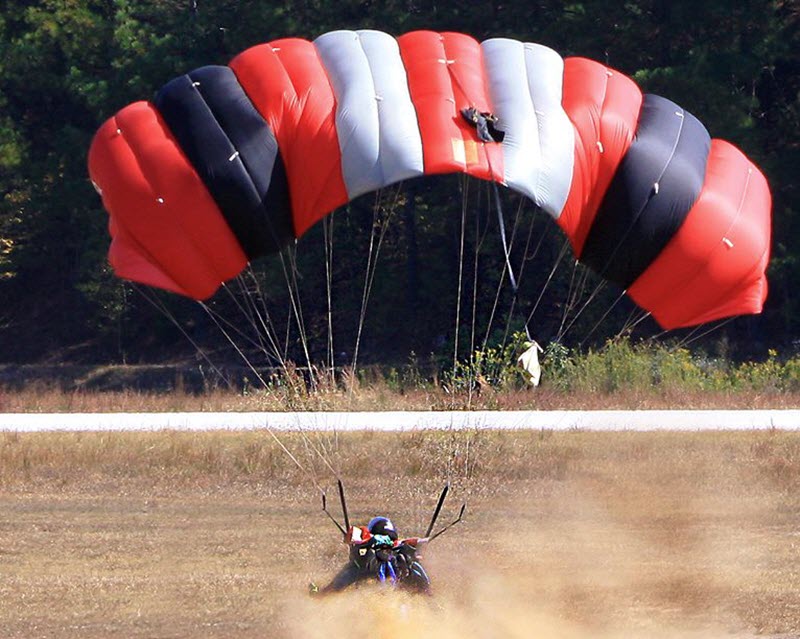How can a strange contraption of nylon and strings be used to guide skydivers safely back to the sturdy ground below? It is undeniable that there is a magical stillness, a certain peace, that one feels seeing a person suspended beneath a bright inflated billowing bunch of fabric. It seems impossible, but, trust us, the impossible is entirely possible! So, how do skydiving parachutes actually work?

Parachute Basics
Skydiving systems today are dual canopy container systems. Simply put, there are two parachutes contained within the “backpack” looking skydiving container. There is a main parachute and a reserve parachute. The main parachute sits toward the bottom of the skydiving container while the reserve parachute, the secondary parachute used in the event of the emergency, is contained in a separate portion of the skydiving container just above the main parachute.
Both the main and reserve parachute are made from a series of small squares of ripstop nylon. This particular pattern contributes to the parachute’s structural stability. Additionally, the nylon used in parachutes has been chemically treated to minimize porosity and increase air resistance.
How Does a Parachute Open?
Parachutes open in staged deployment sequence. At the appropriate altitude, the main parachute is extracted from a pouch on the bottom of the skydiving container by a small auxiliary parachute called a pilot chute. The pilot chute is connected to the main parachute by a length of sturdy fabric called a bridle. As the pilot chute inflates, it creates enough drag force to extract the main parachute.
The main parachute is a ram-air canopy with a series of connected “tubes”. Each tube is open at the front and sewn closed at the back. As each cell inflates with air, the parachute forms a semi-rigid rectangular wing.

Parachute Physics
The physics of parachutes are very similar to the physics of flight for a small fixed-wing aircraft. In fact, many people refer to their parachutes as “wings.” When the parachute is fully inflated, it is, in essence, an airfoil that produces an aerodynamic force. Because of the wing-like shape of the inflated parachute, the air moves more quickly over the top of the parachute than it moves across the bottom. In accordance with Bernoulli’s principle, the faster air that flows across the top of the parachute decreases the air pressure on the top, while the air pressure increases on the bottom of the parachute. The result: sustained lift!
A Parachute To Fit Every Occasion!
Parachutes are incredible engineering marvels developed with reliability and performance in mind. Many are unaware that parachutes aren’t all the same. In fact, parachute manufacturers have spent extensive amounts of time developing parachutes for specific purposes (aside from delivering the jumper safely to the ground). There are zippy parachutes built specifically for speed. Other parachutes are large and docile, developed for student jumpers or exhibition jumps into stadiums and events. Despite the differences in designs, parachute physics remains pretty much the same.
Want to compare what you’ve learned to the real thing? See how a parachute opens first hand with a tandem skydive at Skydive Monroe!
Copyright © 2025, Skydive Monroe, All Rights Reserved.
DropZone Web Design & Marketing by Beyond Marketing, LLC



